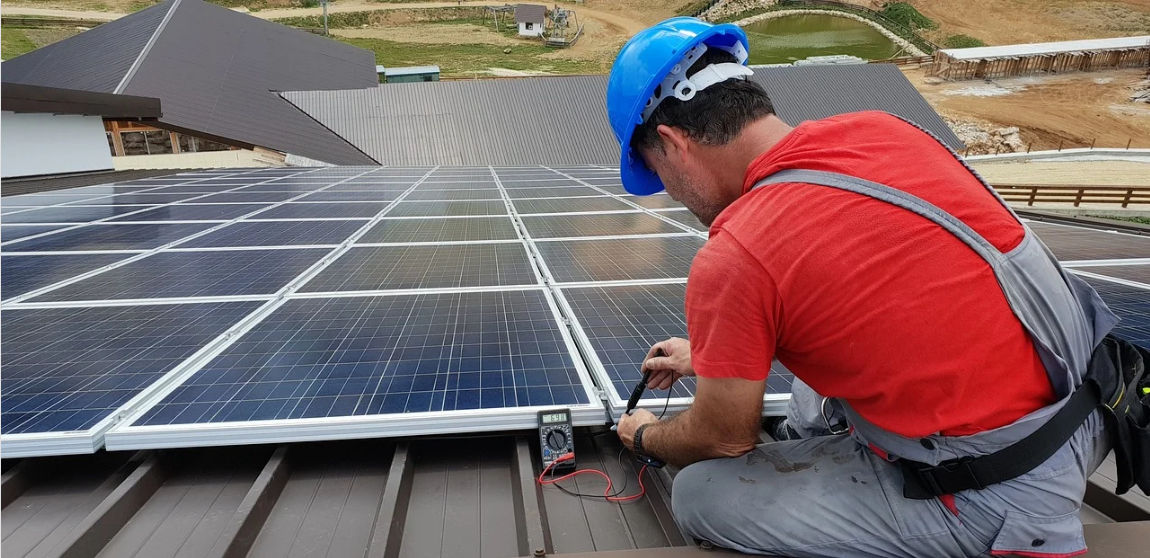A Florida new home subdivision inked a $4.2 million deal with Tampa-based Block Energy to install 77 solar arrays linked together in a community microgrid. The Lakeland, Florida community will be called Myrtlebrook.
Microgrids, which connect solar, energy storage, and smart appliances, come with a bouquet of benefits like localized backup power and resilience, insulation from volatile utility rates, and a more efficient use of energy by connecting what would otherwise be stranded assets.
Microgrid communities can operate separately from the utility’s electric grid, operating even when power outages occur. This is particularly appealing for Florida communities, which are no strangers to the impacts of hurricanes and power outages.
“This microgrid project is disruptive, it’s new and it’s everything emerging technology stands for,” Mike Dammer, manager, emergent technologies at Lakeland Electric. “We are going into the new.”
Each home will be outfitted with an 8 kW solar array integrated on a membrane section of the new homes’ roofs. Every two homes will be linked by a 43 kWh battery. The solar and energy storage devices will together form a microgrid that Block Energy calls the “BlockLoop.”
The planned community is designed to be 77% self-sufficient, though Block Energy is optimistic the system can outperform expectations. It has a similar 37-home microgrid community in Wimauma, Florida that has achieved 93% independence, only drawing 7% of its electric load from utility Tampa Electric company.
“The caveat there is that that 23% will never be on peak — it will always be off peak,” said Dammer.
Purchasing power off-peak only is a win-win for the utility and the microgrid community, as it keeps prices low for customers, and enables the utility to avoid using natural gas-fired peaker plants for additional peak reserve power.
Block Energy plans to break ground on the pilot community in 2024, with home developer Highland Homes beginning housing construction in 2025. The new homes community is expected to be complete in late 2025 or early 2026.
The utility, Lakeland Electric, will be owner-operator of the solar and storage assets, will seek federal tax incentives for the project, which are expected to save $1.1 million in costs.
Microgrids and solar-battery aggregations are shown to have huge benefits for resource efficiency. A study by the University of Otago found that the collective use of batteries had dramatic effects on both energy load smoothing and peak demand shaving, meaning the flexible use of energy reduces the amount of infrastructure buildout to support demand. Aggregation of smart storage led to a reduction in per-house battery requirements by 50% for load-smoothing needs and by 90% for peak shaving.
“This is a way of saying to our customers, ‘We are invested in your future to make sure we can limit outages.’ This is a system that is designed to be built with and for the community. It is part of the community. It is not an add on. It is not a retrofit. This community is a solar community,” said Dammer.
This content is protected by copyright and may not be reused. If you want to cooperate with us and would like to reuse some of our content, please contact: editors@pv-magazine.com.









Microgrids are absolutely what we need more of, including this great example of Myrtlebrook in Lakeland, Florida to more easily incorporate renewable energy and minimize the use of natural gas peaking-power plants to power the grid. I have a key question however, how energy efficient are these new houses? Are they built to meet DOE Zero Energy Ready Home (ZERH) standards or even Passive House standards?
Making sure new and renovated houses are highly energy efficient is critical to making sure all houses tapping into microgrids are using energy as wisely as possible while having safe indoor air quality and delivering a high level of thermal comfort for their owners.